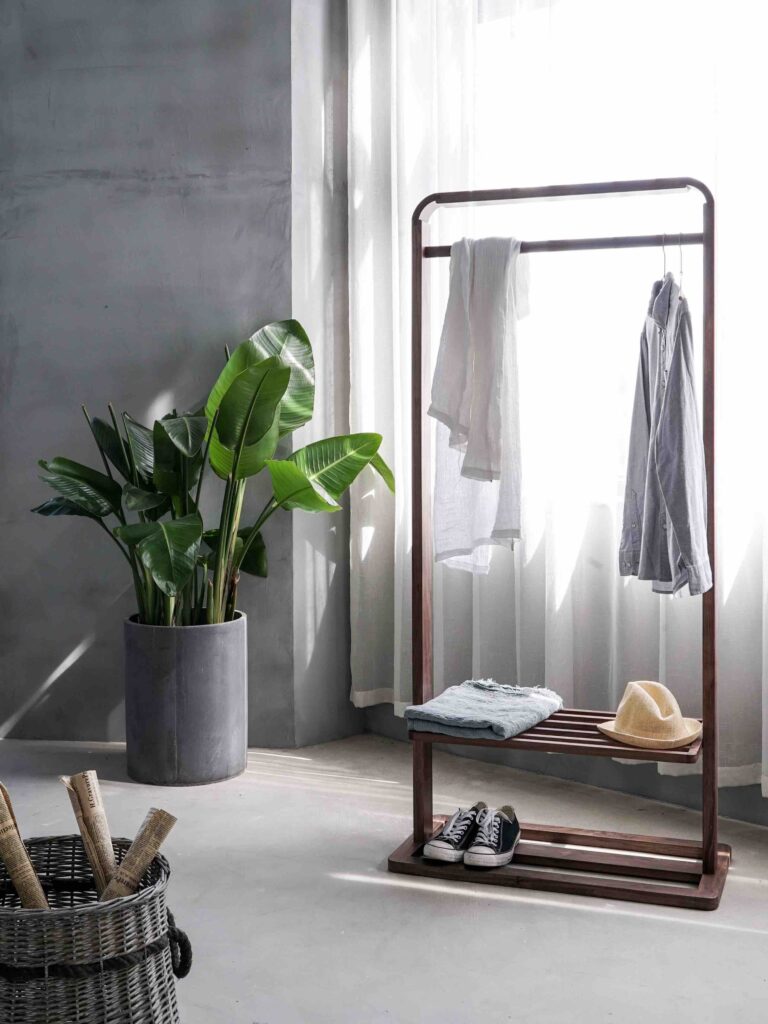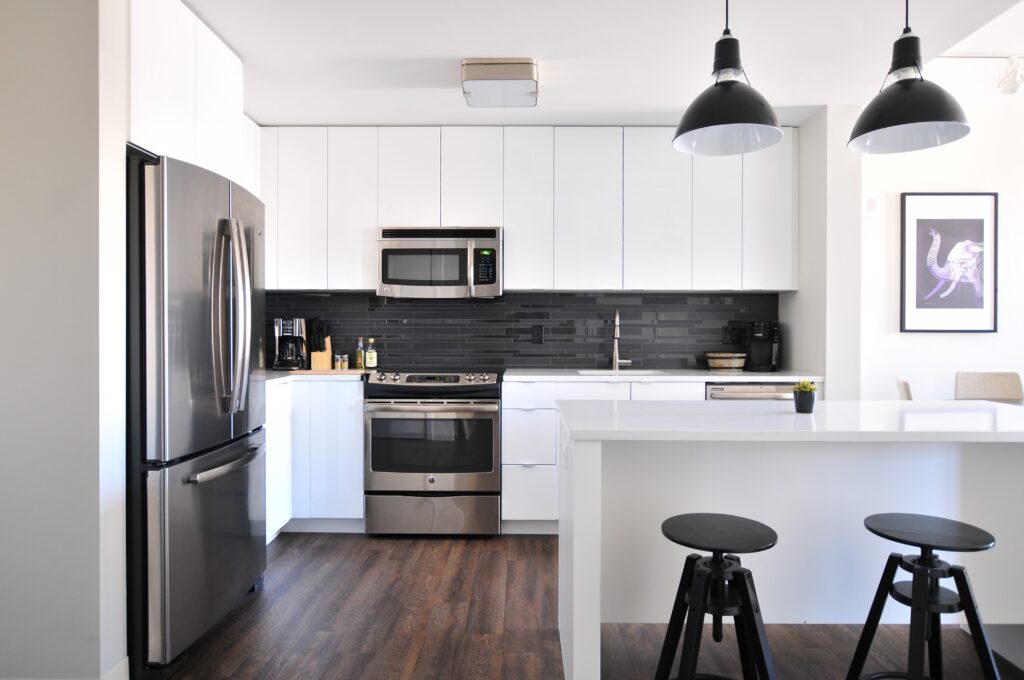Living in a shipping container home has become an increasingly popular choice for those seeking a sustainable and cost-effective housing solution. However, one common concern that arises is how to effectively heat and cool these unique living spaces. In this article, we will explore some of the best methods for maintaining the ideal temperature inside a shipping container home, ensuring comfort all year round.



This image is property of images.unsplash.com.
Understanding the Structure of a Shipping Container Home
Metal properties of shipping containers
When considering the heating and cooling of a shipping container home, it’s important to understand the properties of the materials used in their construction. Shipping containers are typically made of steel, which has excellent strength and durability. However, steel is also a good conductor of heat, which means it can become very hot in warm environments and cold in colder environments. This can pose challenges when it comes to maintaining a comfortable temperature inside the container.
Thermal conductivity in shipping containers
The thermal conductivity of a material refers to its ability to conduct heat. Steel has a relatively high thermal conductivity, which means that heat can easily transfer through it. In the context of a shipping container home, this can lead to rapid heat loss or gain, depending on the external temperature. As a result, it’s essential to account for this when designing the insulation and heating/cooling systems for the home.
Insulation considerations in design and thermal comfort
Insulation plays a crucial role in maintaining thermal comfort within a shipping container home. By adding insulation materials to the walls, floors, and ceilings, you can reduce the transfer of heat between the interior and exterior environments. This not only helps to keep the temperature stable but also enhances energy efficiency by reducing the need for excessive heating or cooling.
Importance of Insulation in Shipping Container Homes
Different types of insulation
When it comes to insulating your shipping container home, there are several different types of insulation to consider. Some common options include rigid foam insulation, spray foam insulation, fiberglass batt insulation, and reflective insulation. Each type has its own set of advantages and disadvantages, so it’s important to choose the one that best suits your needs and climate conditions.
The role of insulation in heat retention
Insulation is critical when it comes to heat retention in a shipping container home. By effectively insulating the walls, floors, and ceilings, you can minimize heat loss during the winter months and prevent excessive heat gain during the summer months. This not only helps to maintain a comfortable indoor temperature but also reduces the energy requirements for heating and cooling.
Choosing the right insulation for each climate type
The choice of insulation should be based on the climate conditions in which your shipping container home is located. For colder climates, insulation with a higher R-value (a measure of thermal resistance) is recommended to prevent heat loss. In warmer climates, insulation with reflective properties can help to reflect sunlight and reduce heat gain. Consulting with a professional or conducting thorough research will help you select the most suitable insulation for your specific climate.



This image is property of images.unsplash.com.
Using Passive Heating and Cooling Methods
Explanation of passive heating and cooling
Passive heating and cooling methods rely on the natural elements and design features of a shipping container home to regulate indoor temperature. These methods use principles of solar energy, airflow, and natural ventilation to heat or cool the home without the need for mechanical systems. Passive heating and cooling can significantly reduce energy consumption and create a sustainable living space.
Applying passive solar design
Passive solar design is a technique that utilizes sunlight to heat a home during the colder months and provide shade to keep it cool during the warmer months. This design approach incorporates features such as large south-facing windows to capture sunlight, thermal mass materials to absorb and store heat, and shading devices to block excessive sunlight.
Maximizing natural ventilation for cooling
Natural ventilation plays a key role in cooling a shipping container home. By strategically placing windows and vents, you can take advantage of natural air movement to remove hot air and bring in cooler air. Cross-breeze ventilation, where windows on opposite sides of the container are opened, can create a refreshing airflow that helps to cool the interior space.
Active Heating Systems for Shipping Container Homes
Radiant floor heating
Radiant floor heating is a popular option for shipping container homes due to its energy efficiency and space-saving capabilities. This system involves installing heating pipes or electric heating elements beneath the floor surface, allowing heat to radiate upwards and warm the entire living space. Radiant floor heating provides consistent and comfortable warmth without the need for bulky radiators or forced-air systems.
The use of a wood stove
A wood stove can be an excellent heating option for shipping container homes, especially in colder climates. Wood stoves offer both heating and a cozy ambiance, making them a popular choice for those seeking an off-grid lifestyle. However, it’s important to ensure proper ventilation and compliance with local regulations when using a wood stove inside a shipping container.
Hot water baseboard heaters
Hot water baseboard heaters, also known as hydronic baseboard heaters, use heated water to distribute warmth throughout the home. These systems consist of a series of pipes connected to a boiler, which heats the water and circulates it through the baseboards. Hot water baseboard heaters offer precise temperature control, quiet operation, and efficient heat distribution.
Heat pumps
Heat pumps are another option for heating a shipping container home. These systems work by transferring heat from the outside air (even in cold temperatures) into the home. Heat pumps can provide both heating and cooling, making them versatile and energy-efficient. However, they may be less effective in extremely cold climates, and their efficiency is dependent on the temperature difference between the outdoor and indoor environments.



This image is property of images.unsplash.com.
Air Conditioning Options for Shipping Container Homes
Traditional air conditioning units
Traditional air conditioning units, such as central air conditioning systems, can be installed in shipping container homes to provide cool air during the summer months. These systems utilize a compressor to cool refrigerant, which is then distributed throughout the home via ductwork. While effective in cooling the entire home, traditional air conditioning units can be costly to install and may require significant modifications to the container structure.
Ductless mini-split systems
Ductless mini-split systems are a popular choice for cooling shipping container homes due to their versatility and ease of installation. These systems consist of an outdoor unit connected to one or more indoor units, which are mounted on the walls or ceilings of individual rooms. Ductless mini-split systems offer customizable cooling for each room, energy-efficient operation, and minimal ductwork requirements.
Evaporative coolers
Evaporative coolers, also known as swamp coolers, are an eco-friendly and cost-effective option for cooling a shipping container home. These systems work by drawing in warm air and passing it through water-moistened pads. As the air is cooled by evaporation, it is then circulated throughout the home. Evaporative coolers are most effective in dry climates, as they add moisture to the air.
Portable air conditioners
Portable air conditioners can provide temporary cooling solutions for shipping container homes. These units do not require installation and can be easily moved from room to room. Portable air conditioners typically consist of a single unit that sits on the floor and vents warm air out of a window or through a duct. While convenient, portable air conditioners may not provide the same cooling capacity as larger air conditioning systems.
Roofing Considerations for Heat Control
Benefits of a green roof for cooling
A green roof can offer numerous benefits when it comes to cooling a shipping container home. Green roofs consist of vegetation and a specialized growing medium, creating a natural insulating barrier that helps to reduce heat transfer to the interior space. Additionally, the vegetation absorbs and evaporates water, creating a cooling effect through evapotranspiration.
Reflective roofing materials
Reflective roofing materials, such as cool roofs or metal roofs with reflective coatings, can help to mitigate heat absorption from the sun’s rays. These materials reflect a significant portion of solar radiation, reducing heat gain and keeping the interior of the shipping container home cooler. Reflective roofing materials can be particularly effective in hot climates where the sun’s intensity is high.
The role of shading and roof overhangs
Shading and roof overhangs play a crucial role in minimizing direct sun exposure on the roof and windows of a shipping container home. By strategically placing shading devices, such as awnings or trellises, you can block the sun’s rays and prevent excessive heat gain. Roof overhangs can provide additional shade and protection from the elements, further enhancing the energy efficiency and comfort of the home.
Window Considerations for Temperature Control
Double-glazed windows for heat retention
Double-glazed windows, also known as insulated windows, consist of two layers of glass with a sealed air gap in between. This design helps to reduce heat transfer through the windows and provides better insulation compared to single-pane windows. Double-glazed windows are effective in retaining heat during the winter months and can also help to block unwanted heat in the summer.
Reflective window films for cooling
Reflective window films can be applied to the glass surfaces of windows in a shipping container home to reduce heat gain from the sun. These films have a reflective coating that reflects a portion of the solar radiation, preventing it from entering the interior space. Reflective window films can be a cost-effective solution for cooling, especially in sunny climates.
Strategic window placement for cross-breeze ventilation
The placement and design of windows can have a significant impact on the natural ventilation of a shipping container home. By positioning windows on multiple sides of the container and incorporating design features such as clerestory windows or louvers, you can promote cross-breeze ventilation. This allows for the efficient exchange of stale, warm air with fresh, cool air, improving indoor air quality and comfort.
Environmental Factors affecting Heating and Cooling
The impact of sun shadows
Sun shadows refer to the areas of a shipping container home that are shaded by nearby structures, trees, or other objects. These shadows can significantly affect the amount of direct sunlight that reaches the home, influencing both heating and cooling. By considering the sun’s path throughout the day and the potential shadows cast by surrounding objects, you can optimize the design and placement of your container home for maximum efficiency.
Effects of surrounding landscape
The surrounding landscape can also influence the heating and cooling of a shipping container home. For example, trees or tall shrubs can provide shade, reducing heat gain in the summer. Additionally, bodies of water nearby can have a cooling effect on the immediate surroundings, making the container home more comfortable during hot weather. Understanding the local landscape and incorporating it into the design can contribute to improved thermal comfort.
Utilizing wind patterns for natural ventilation
Wind patterns can play a significant role in promoting natural ventilation and cooling in a shipping container home. By positioning windows or vents to align with prevailing winds, you can take advantage of the breeze to bring fresh air into the home and carry out warm or stale air. Understanding the local wind patterns and adjusting the design and placement of openings accordingly can enhance the effectiveness of natural ventilation.
Energy Efficiency in Heating and Cooling a Shipping Container Home
Solar panels for power supply
Solar panels can be an excellent option for powering the heating and cooling systems in a shipping container home. By harnessing the energy of the sun, solar panels can generate electricity to run air conditioning units, heat pumps, or other heating and cooling systems. Solar panels provide a clean and renewable source of energy, reducing reliance on traditional utility providers and minimizing carbon emissions.
Utilizing Energy Star rated appliances
Energy Star rated appliances, including heating and cooling systems, can significantly improve the energy efficiency of a shipping container home. Appliances with the Energy Star label meet strict energy efficiency criteria set by the Environmental Protection Agency (EPA). By selecting Energy Star rated appliances, you can reduce energy consumption, save on utility bills, and minimize the environmental impact of your home.
Minimizing energy use through home design
In addition to utilizing energy-efficient appliances, the overall home design of a shipping container home can contribute to energy savings. Incorporating passive heating and cooling techniques, such as passive solar design and natural ventilation, can reduce the reliance on mechanical heating and cooling systems. Proper insulation, strategic window placement, and shading devices can also help to minimize energy use and create a more sustainable and comfortable living environment.
Examining the Pros and Cons of Each Heating and Cooling Method
Comparing costs
When considering the best heating and cooling methods for a shipping container home, it’s important to evaluate the costs associated with each option. Installation costs, ongoing maintenance expenses, and energy consumption should all be taken into account. While some methods may have higher upfront costs, they may offer long-term savings through energy efficiency and reduced utility bills.
Ease of installation
The ease of installation can vary among different heating and cooling methods. Some systems, like portable air conditioners or wood stoves, may require minimal installation efforts and can be easily incorporated into a shipping container home. On the other hand, systems like radiant floor heating or central air conditioning may require more extensive modifications and professional installation.
Efficiency in varying temperatures
The efficiency of heating and cooling systems can vary depending on the temperature extremes experienced in a given climate. Some methods, such as radiant floor heating or heat pumps, can provide consistent performance across a wide range of temperatures. Others, like evaporative coolers, may be more effective in dry, hot climates. Considering the specific climate conditions in which the shipping container home is located is crucial when evaluating the efficiency of each method.
Maintenance requirements
Each heating and cooling method has its own maintenance requirements that should be considered. Some systems, such as wood stoves or portable air conditioners, may require regular cleaning and inspection to ensure safe and optimal operation. Other systems, like heat pumps or ductless mini-split systems, may have filters that need periodic cleaning or refrigerant level checks. It’s essential to factor in the maintenance obligations when selecting the most suitable method.
In conclusion, heating and cooling a shipping container home requires careful consideration of various factors, including insulation, passive and active heating/cooling methods, roofing and window considerations, environmental influences, energy efficiency, and maintenance requirements. By understanding the unique challenges and opportunities of these homes, you can create a comfortable and sustainable living space that meets your specific needs while minimizing energy consumption and environmental impact.
